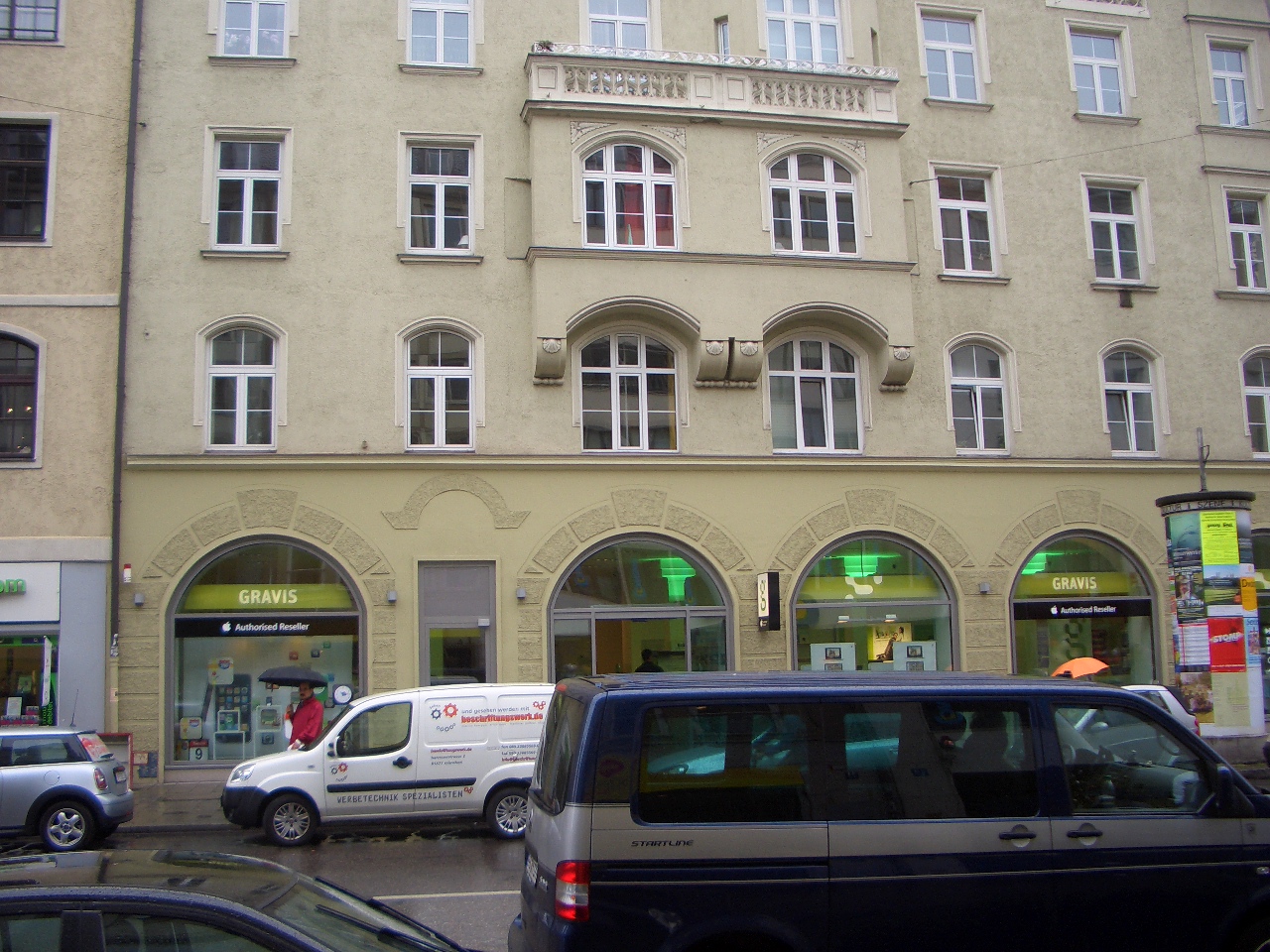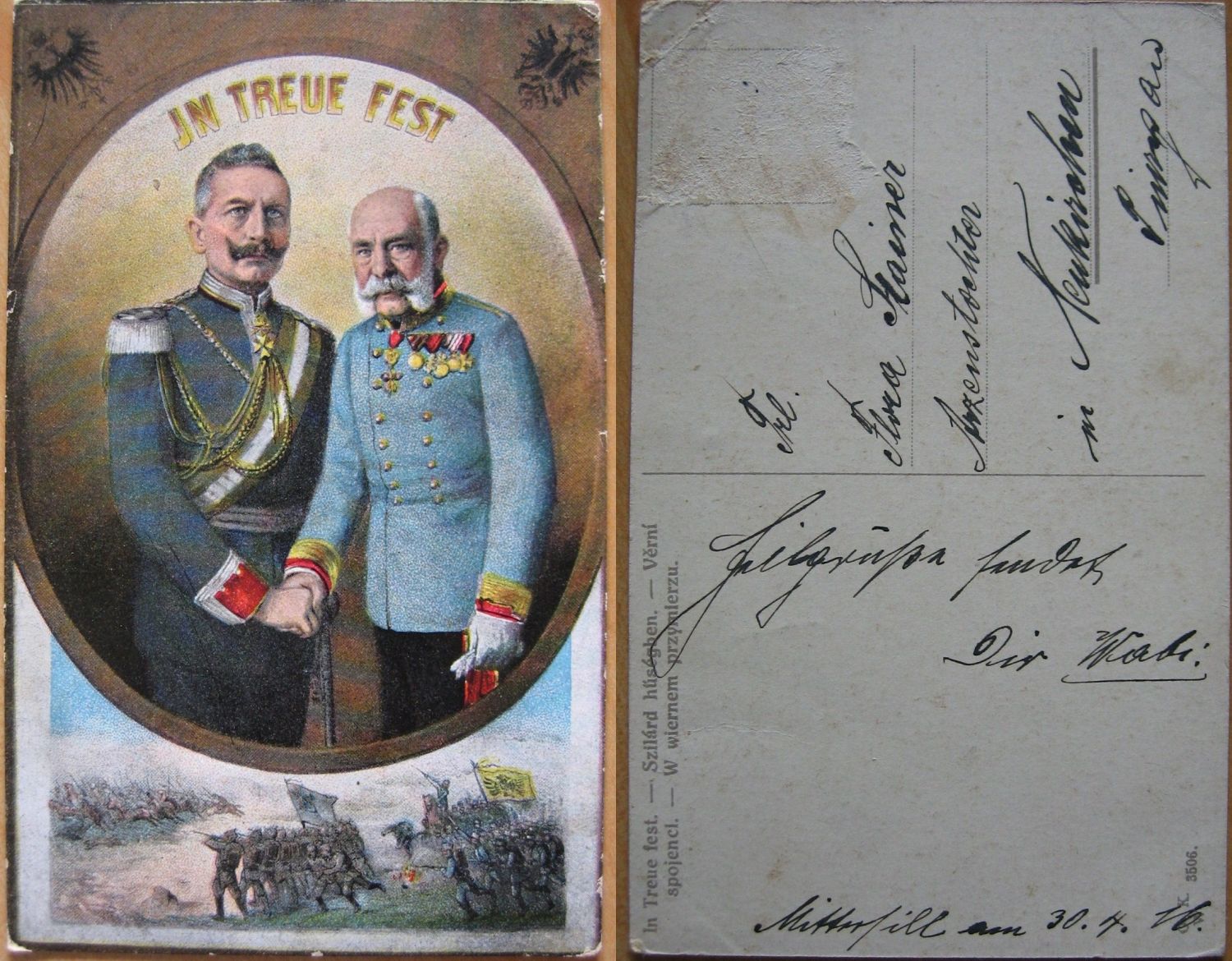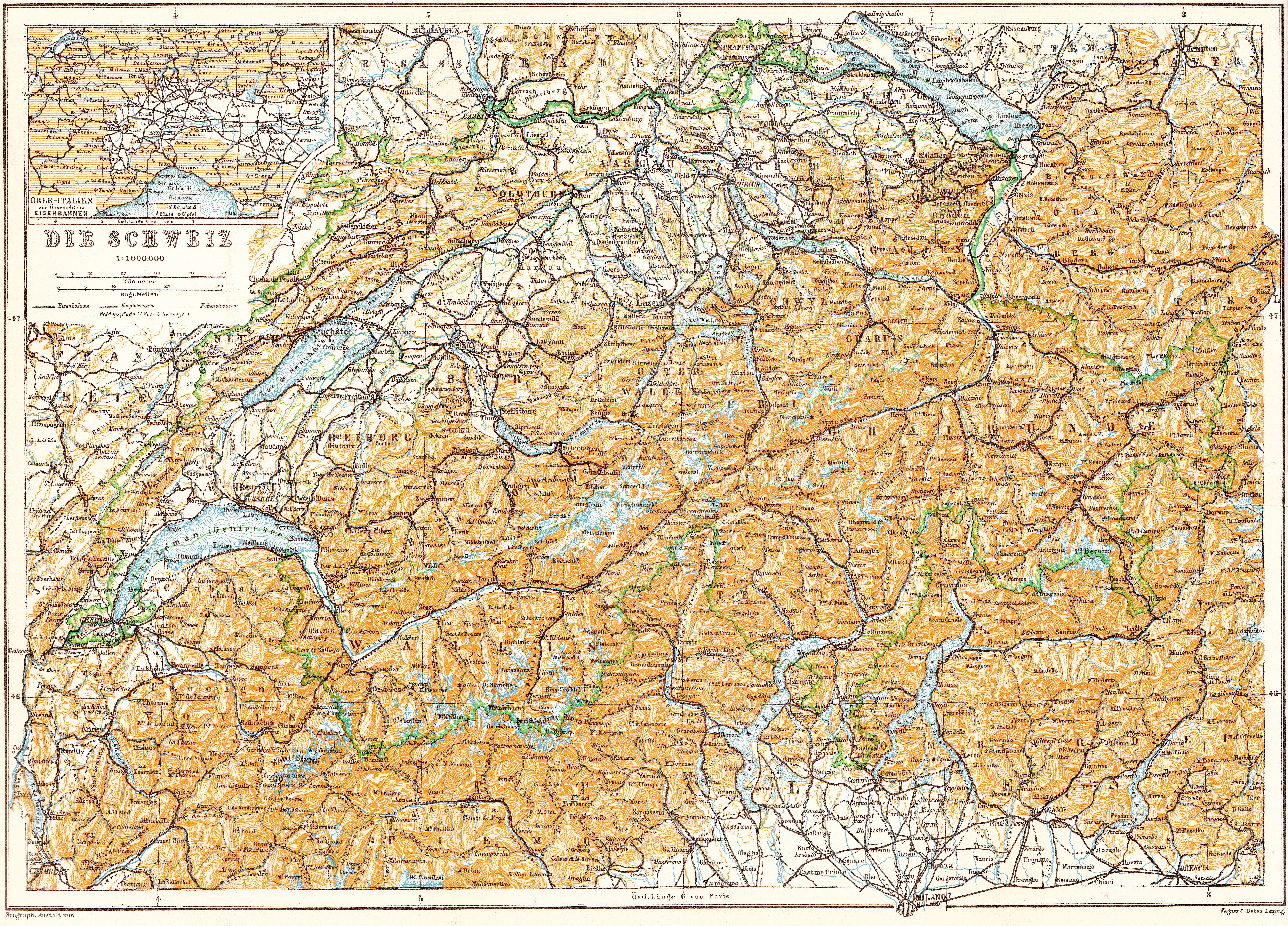|
Sterneckerbräu Heute
The ''Sterneckerbräu'' was a brewery in Munich, Germany. The associated inn served as a meeting place for the first branch of the German Workers' Party (DAP), which later changed its name to the Nazi Party (NSDAP). Similar to the ''Bürgerbräukeller'', it was a place of pilgrimage for the Nazi movement. The building is now used as a residential and commercial building and is a registered monument on the Bavarian monument list. Location The Sterneckerbräu was located in Munich's old town in the Tal 38 (originally 54) on the corner of Sterneckerstraße, very close to the Isartor. History The present building originally covered three plots of land. In Jakob Sandtner's model of the city of Munich from 1570, three two-story houses can be seen. In the 16th and 17th centuries, the house at the corner of Tal and Sterneckergasse was owned by the beer brewer family Sternegger, after whom the road is named since 1696. A brewery had been there since 1557. In the 19th century, the ... [...More Info...] [...Related Items...] OR: [Wikipedia] [Google] [Baidu] |
Munich
Munich ( ; german: München ; bar, Minga ) is the capital and most populous city of the States of Germany, German state of Bavaria. With a population of 1,558,395 inhabitants as of 31 July 2020, it is the List of cities in Germany by population, third-largest city in Germany, after Berlin and Hamburg, and thus the largest which does not constitute its own state, as well as the List of cities in the European Union by population within city limits, 11th-largest city in the European Union. The Munich Metropolitan Region, city's metropolitan region is home to 6 million people. Straddling the banks of the River Isar (a tributary of the Danube) north of the Northern Limestone Alps, Bavarian Alps, Munich is the seat of the Bavarian Regierungsbezirk, administrative region of Upper Bavaria, while being the population density, most densely populated municipality in Germany (4,500 people per km2). Munich is the second-largest city in the Bavarian dialects, Bavarian dialect area, ... [...More Info...] [...Related Items...] OR: [Wikipedia] [Google] [Baidu] |
In Treue Fest
''In Treue fest'' (German for " steadfast in loyalty; firm in fidelity") was the motto of the Kingdom of Bavaria (1805–1918) and of its Wittelsbach rulers, after the end of World War I used by Bavarian monarchists. The motto originates as that of the Order of Saint Hubert of the Dukes of Jülich and Berg, rendered in 15th-century Lower Franconian as ''in traw vast''. The order was defunct during the 17th century, and revived in 1708 under Johann Wilhelm, by which time the Duchy of Jülich-Berg had passed to the Palatinate branch of the House of Wittelsbach. The order was brought to Bavaria in 1778 when Charles Theodore, Duke of Jülich and Berg and Count-Elector Palatine, succeeded his childless cousin, Maximilian III Joseph as Elector of Bavaria. In 1799, Charles Theodore was succeeded by Maximilian I Joseph of Bavaria, a member of a different branch of the house of Wittelsbach, who became the first king of Bavaria. The motto is the title of two military marches, ... [...More Info...] [...Related Items...] OR: [Wikipedia] [Google] [Baidu] |
Brewery Buildings
A brewery or brewing company is a business that makes and sells beer. The place at which beer is commercially made is either called a brewery or a beerhouse, where distinct sets of brewing equipment are called plant. The commercial brewing of beer has taken place since at least 2500 BC; in ancient Mesopotamia, brewers derived social sanction and divine protection from the goddess Ninkasi. Brewing was initially a cottage industry, with production taking place at home; by the ninth century, monasteries and farms would produce beer on a larger scale, selling the excess; and by the eleventh and twelfth centuries larger, dedicated breweries with eight to ten workers were being built. The diversity of size in breweries is matched by the diversity of processes, degrees of automation, and kinds of beer produced in breweries. A brewery is typically divided into distinct sections, with each section reserved for one part of the brewing process. History Beer may have been known in Neolithi ... [...More Info...] [...Related Items...] OR: [Wikipedia] [Google] [Baidu] |
Loggia
In architecture, a loggia ( , usually , ) is a covered exterior gallery or corridor, usually on an upper level, but sometimes on the ground level of a building. The outer wall is open to the elements, usually supported by a series of columns or arches. They can be on principal fronts and/or sides of a building and are not meant for entrance but as an outdoor sitting room."Definition of Loggia" Lexic.us. Retrieved on 2014-10-24. An overhanging loggia may be supported by a baldresca. From the early , nearly every Italian |
Bay Window
A bay window is a window space projecting outward from the main walls of a building and forming a bay in a room. Types Bay window is a generic term for all protruding window constructions, regardless of whether they are curved or angular, or run over one or multiple storey A storey (British English) or story (American English) is any level part of a building with a floor that could be used by people (for living, work, storage, recreation, etc.). Plurals for the word are ''storeys'' (UK) and ''stories'' (US). T ...s. In plan, the most frequently used shapes are isosceles trapezoid (which may be referred to as a ''canted (architecture), canted bay window'') and rectangle. But other polygonal shapes with more than two corners are also common as are curved shapes. If a bay window is curved it may alternatively be called ''bow window.'' Bay windows in a triangular shape with just one corner exist but are relatively rare. A bay window supported by a corbel, Bracket (archite ... [...More Info...] [...Related Items...] OR: [Wikipedia] [Google] [Baidu] |
Arcade (architecture)
An arcade is a succession of contiguous arches, with each arch supported by a colonnade of columns or piers. Exterior arcades are designed to provide a sheltered walkway for pedestrians. The walkway may be lined with retail stores. An arcade may feature arches on both sides of the walkway. Alternatively, a blind arcade superimposes arcading against a solid wall. Blind arcades are a feature of Romanesque architecture that influenced Gothic architecture. In the Gothic architectural tradition, the arcade can be located in the interior, in the lowest part of the wall of the nave, supporting the triforium and the clerestory in a cathedral, or on the exterior, in which they are usually part of the walkways that surround the courtyard and cloisters. Many medieval arcades housed shops or stalls, either in the arcaded space itself, or set into the main wall behind. From this, "arcade" has become a general word for a group of shops in a single building, regardless of the architectural f ... [...More Info...] [...Related Items...] OR: [Wikipedia] [Google] [Baidu] |
Chamfer
A chamfer or is a transitional edge between two faces of an object. Sometimes defined as a form of bevel, it is often created at a 45° angle between two adjoining right-angled faces. Chamfers are frequently used in machining, carpentry, furniture, concrete formwork, mirrors, and to facilitate assembly of many mechanical engineering designs. Terminology In machining the word '' bevel'' is not used to refer to a chamfer. Machinists use chamfers to "ease" otherwise sharp edges, both for safety and to prevent damage to the edges. A ''chamfer'' may sometimes be regarded as a type of bevel, and the terms are often used interchangeably. In furniture-making, a lark's tongue is a chamfer which ends short of a piece in a gradual outward curve, leaving the remainder of the edge as a right angle. Chamfers may be formed in either inside or outside adjoining faces of an object or room. By comparison, a ''fillet'' is the rounding-off of an interior corner, and a ''round'' (or ''radiu ... [...More Info...] [...Related Items...] OR: [Wikipedia] [Google] [Baidu] |
Gable Roof
A gable roof is a roof consisting of two sections whose upper horizontal edges meet to form its ridge. The most common roof shape in cold or temperate climates, it is constructed of rafters, roof trusses or purlins. The pitch of a gable roof can vary greatly. Distribution The gable roof is so common because of the simple design of the roof timbers and the rectangular shape of the roof sections. This avoids details which require a great deal of work or cost and which are prone to damage. If the pitch or the rafter lengths of the two roof sections are different, it is described as an 'asymmetrical gable roof'. A gable roof on a church tower (gable tower) is usually called a 'cheese wedge roof' (''Käsbissendach'') in Switzerland. Its versatility means that the gable roof is used in many regions of the world. In regions with strong winds and heavy rain, gable roofs are built with a steep pitch in order to prevent the ingress of water. By comparison, in alpine regions, gable roo ... [...More Info...] [...Related Items...] OR: [Wikipedia] [Google] [Baidu] |
Sterneckerbräu Heute
The ''Sterneckerbräu'' was a brewery in Munich, Germany. The associated inn served as a meeting place for the first branch of the German Workers' Party (DAP), which later changed its name to the Nazi Party (NSDAP). Similar to the ''Bürgerbräukeller'', it was a place of pilgrimage for the Nazi movement. The building is now used as a residential and commercial building and is a registered monument on the Bavarian monument list. Location The Sterneckerbräu was located in Munich's old town in the Tal 38 (originally 54) on the corner of Sterneckerstraße, very close to the Isartor. History The present building originally covered three plots of land. In Jakob Sandtner's model of the city of Munich from 1570, three two-story houses can be seen. In the 16th and 17th centuries, the house at the corner of Tal and Sterneckergasse was owned by the beer brewer family Sternegger, after whom the road is named since 1696. A brewery had been there since 1557. In the 19th century, the ... [...More Info...] [...Related Items...] OR: [Wikipedia] [Google] [Baidu] |
World War II
World War II or the Second World War, often abbreviated as WWII or WW2, was a world war that lasted from 1939 to 1945. It involved the vast majority of the world's countries—including all of the great powers—forming two opposing military alliances: the Allies and the Axis powers. World War II was a total war that directly involved more than 100 million personnel from more than 30 countries. The major participants in the war threw their entire economic, industrial, and scientific capabilities behind the war effort, blurring the distinction between civilian and military resources. Aircraft played a major role in the conflict, enabling the strategic bombing of population centres and deploying the only two nuclear weapons ever used in war. World War II was by far the deadliest conflict in human history; it resulted in 70 to 85 million fatalities, mostly among civilians. Tens of millions died due to genocides (including the Holocaust), starvation, ma ... [...More Info...] [...Related Items...] OR: [Wikipedia] [Google] [Baidu] |
Baedeker
Verlag Karl Baedeker, founded by Karl Baedeker on July 1, 1827, is a German publisher and pioneer in the business of worldwide travel guides. The guides, often referred to simply as " Baedekers" (a term sometimes used to refer to similar works from other publishers, or travel guides in general), contain, among other things, maps and introductions; information about routes and travel facilities; and descriptions of noteworthy buildings, sights, attractions and museums, written by specialists. History (1827−1948) Karl Baedeker 1827−1859: Karl Baedeker (1801-1859) descended from a long line of printers, booksellers and publishers from Essen. He was the eldest of ten children of Gottschalk Diederich Bädeker (1778–1841), who had inherited the publishing house founded by his own father, Zacharias Gerhard Bädeker (1750–1800). The company also published the local newspaper, the '' Essendische Zeitung'', and the family expected that Karl, too, would eventually join the firm. Karl ... [...More Info...] [...Related Items...] OR: [Wikipedia] [Google] [Baidu] |
Reichswehr
''Reichswehr'' () was the official name of the German armed forces during the Weimar Republic and the first years of the Third Reich. After Germany was defeated in World War I, the Imperial German Army () was dissolved in order to be reshaped into a peacetime army. From it a provisional Reichswehr was formed in March 1919. Under the terms of the Treaty of Versailles, the rebuilt German army was subject to severe limitations in size and armament. The official formation of the Reichswehr took place on 1 January 1921 after the limitations had been met. The German armed forces kept the name 'Reichswehr' until Adolf Hitler's 1935 proclamation of the "restoration of military sovereignty", at which point it became part of the new . Although ostensibly apolitical, the Reichswehr acted as a state within a state, and its leadership was an important political power factor in the Weimar Republic. The Reichswehr sometimes supported the democratic government, as it did in the Ebert-G ... [...More Info...] [...Related Items...] OR: [Wikipedia] [Google] [Baidu] |









